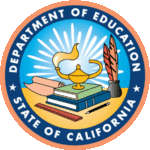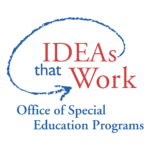This is a series of modules on distance learning. The modules cover technology, blended learning, social-emotional learning, continuity of learning, hybrid learning, COVID-19, learning loss, transition back to school, English Language Learners, distance learning strategies and students with disabilities. Modules: 1. Hot Topics in Technology & Pedagogy 2.Continuity of Learning 3. Learning Acceleration Series 4. Advancing Equity in an Era of Crisis 5. Distance Learning Consortium 6. Distance Learning Strategies 7. Rapid Response transition 8. Setting up Virtual Learning Systems 9. Distance Learning 10. Special Education 11. Community Engagement
California Collaborative for Educational Excellence (ccee). 2020. Distance Learning and Teaching Modules. Sacramento, California: California Collaborative for Education Excellence (ccee)
https://ccee-ca.org/resources/distance-teaching-learning/
A collaboration between South County SELPA, the Equity, Disproportionality & Design Project, and the National Center for Urban School Transformation (NCUST), featuring teachers and school leaders from award-winning schools. In this five session series, NCUST Executive Coaches Cara Riggs, Dr. Rupi Boyd, and Dr. Joseph Johnson will teach about five important practices successful schools have used to elevate learning to new levels for all students.
Equity, Disproportionality & Design, (2021).
This letter from Secretary Cardona highlights key resources and information about resources from the Department that may be useful in supporting the needs of students with disabilities in particular, including tools for schools to assist students in addressing any disability-based behaviors that could otherwise interfere with their or other students' learning, or that could lead to student discipline or impact safety
Miguel A. Cardona. 2022. Letter from the United States Secretary of Education, dated July 19, 2022. https://www2.ed.gov/policy/gen/guid/secletter/220719.html (accessed September 16, 2022).
In this technical assistance document (a companion to the Questions and Answers: Addressing the Needs of Children with Disabilities and IDEA’s Discipline Provisions, which outlines the legal requirements related to behavior support and discipline for eligible students with disabilities under IDEA), the Office of Special Education Programs (OSEP) provides information about resources, strategies, and evidence-based practices that (while not required by law) can help States, LEAs, schools, early childhood programs, educators, and families in their efforts to meet IDEA requirements and, in doing so, improve outcomes for children with disabilities.
Office of Special Education Rehabilitative Services. 2022. Positive, Proactive Approaches to Supporting the Needs of Children with Disabilities: A Guide for Stakeholders
https://sites.ed.gov/idea/files/guide-positive-proactive-approaches-to-supporting-children-with-disabilities.pdf (accessed September 16, 2022).


